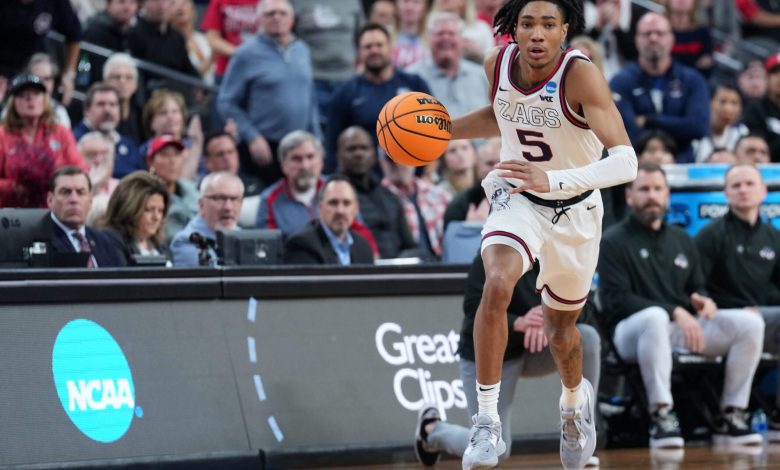A study reveals elite recruits who transfer face challenges, potentially hindering NFL development, as seven years of transfer portal data show increased instability may impact long-term player growth.

The NCAA transfer portal has fundamentally reshaped college football recruiting and player movement. Over the past seven years, the transfer portal has become a major factor influencing team rosters, player careers, and even NFL prospects. While transferring can offer players new opportunities—whether for playing time, scheme fit, or exposure—it also presents potential risks, especially for elite recruits aiming for NFL success.
This article explores a concerning trend revealed by recent studies on transfer portal data: elite recruits who transfer may face developmental challenges that could hinder their progression toward the NFL. Drawing from seven years of data, it analyzes how transferring affects elite players’ stability, growth, and draft prospects, and discusses what this means for athletes, coaches, and scouts.
The Rise of the Transfer Portal: Changing College Football’s Landscape
Introduced in 2018, the NCAA transfer portal simplified the process for college athletes to switch programs. Previously, transferring was more restrictive, often requiring sitting out a year. The portal’s creation gave players greater freedom, encouraging more movement and increasing competition among schools to attract transfers.
The transfer portal has seen explosive growth. Early on, only a handful of players entered annually; now, thousands do each year. This includes a mix of role players seeking better fits and high-profile elite recruits changing programs.
Elite recruits are defined as those who were highly ranked coming out of high school—often 4-star or 5-star prospects—who typically possess the talent to compete at the highest college level and project as NFL draft picks.
Why Do Elite Recruits Transfer?
Elite recruits transfer for various reasons:
- Playing Time: Competition is fierce, and some elite players seek programs offering clearer paths to starting roles.
- Coaching Changes: Coaching staff turnover or scheme shifts can motivate players to find a better fit.
- Development Opportunities: Players sometimes move to programs with better reputations for developing NFL talent.
- Personal Reasons: Family, academics, or geographic preferences can influence transfers.
- Injuries or Performance: Sometimes an injury or a lack of on-field success triggers a transfer to reboot their career.
While transferring can open doors, it also introduces challenges, including adapting to new systems, cultures, and expectations, which can affect development.
Data Insights: Seven Years of Transfer Portal Trends
An extensive study examining transfer portal data from 2018 through 2024 provides valuable insights. The study tracked over 3,500 elite recruits who entered the portal during this period, analyzing their college careers, playing time, and NFL draft outcomes.
Key findings include:
- Increased Transfer Frequency: Approximately 35% of elite recruits transferred at least once during their college careers.
- Multiple Transfers: About 10% transferred more than once, leading to heightened instability.
- Playing Time Fluctuations: Transfers initially resulted in increased playing time for many players but often declined in subsequent seasons due to adjustment periods or competition.
- Developmental Disruptions: Frequent transfers correlated with less consistent development, as measured by game performance metrics and coaching evaluations.
- NFL Draft Impact: Elite recruits who transferred had a 15% lower chance of being drafted into the NFL compared to those who stayed at their original programs.
Developmental Challenges for Transferring Elite Recruits
Several factors explain why transferring can hinder elite recruits’ development and NFL prospects:
- Learning New Systems: Each program has distinct offensive or defensive schemes. Adapting takes time and can limit early impact.
- Relationship Building: Trust and chemistry with coaches and teammates are crucial for growth; transferring disrupts these bonds.
- Inconsistent Coaching: Frequent changes in coaching philosophies may lead to conflicting instructions or techniques.
- Reduced Continuity: Consistent training regimens and development plans are harder to maintain across programs.
- Mental and Emotional Stress: Transferring often involves relocating, adjusting socially, and facing uncertainty, which can affect performance.
These challenges compound when players transfer multiple times or move to programs with less stable environments.
Case Studies: Successes and Struggles
While the overall trend suggests risk, some elite recruits have successfully transferred and improved their NFL prospects. For example:
- Player A transferred once from a crowded depth chart to a program with a scheme better suited to his skills, blossoming into a high draft pick.
- Player B struggled after multiple transfers, facing system changes and reduced playing time, ultimately going undrafted despite high potential.
These contrasting cases illustrate that while transferring can be beneficial, it requires careful consideration, strong support systems, and the right environment.
What This Means for Players and Coaches
Understanding these trends is critical for athletes and coaching staffs:
- For Players: Transfer decisions should weigh immediate benefits against long-term development. Consulting trusted mentors, evaluating program stability, and considering fit beyond playing time are vital.
- For Coaches: Recruiting transfers requires comprehensive onboarding and development plans. Supporting transfer athletes emotionally and technically can improve outcomes.
- For NFL Scouts: Evaluators need to contextualize transfer histories when assessing prospects. Recognizing the challenges of adapting to multiple programs can provide insights into a player’s resilience and potential.
The Future of Transfers and NFL Development
The transfer portal’s influence will likely continue growing, but programs and players can mitigate risks:
- Improved Support Networks: Universities expanding academic, psychological, and social support for transfers.
- Developmental Continuity Programs: Coordinated training plans to ensure smooth transitions.
- Increased Transparency: Better communication about fit, expectations, and opportunities prior to transferring.
Moreover, ongoing research and data analysis will help tailor strategies to maximize elite recruits’ success despite transfers.
The transfer portal has revolutionized college football, offering elite recruits new chances to find their place. However, seven years of data reveal a concerning trend: transferring, especially multiple times, can hinder player development and lower NFL draft chances.
Elite recruits and their support systems must carefully evaluate transfer decisions, balancing short-term gains with long-term growth. Coaches and scouts must understand the nuances of transfers when developing talent and projecting NFL potential.
Ultimately, with thoughtful planning and support, transfers can be part of a successful career path—but stability, continuity, and fit remain critical for reaching the highest levels of football.









